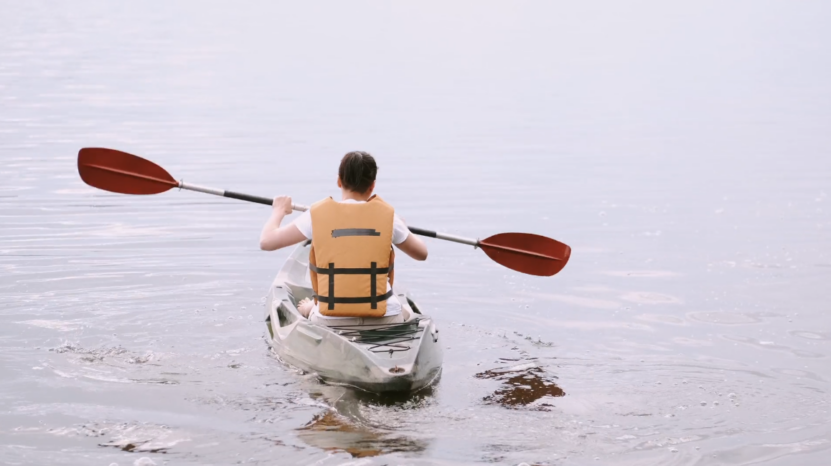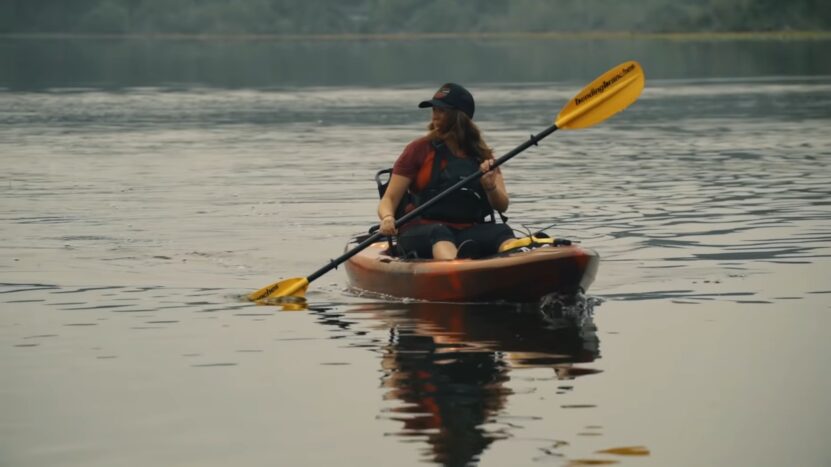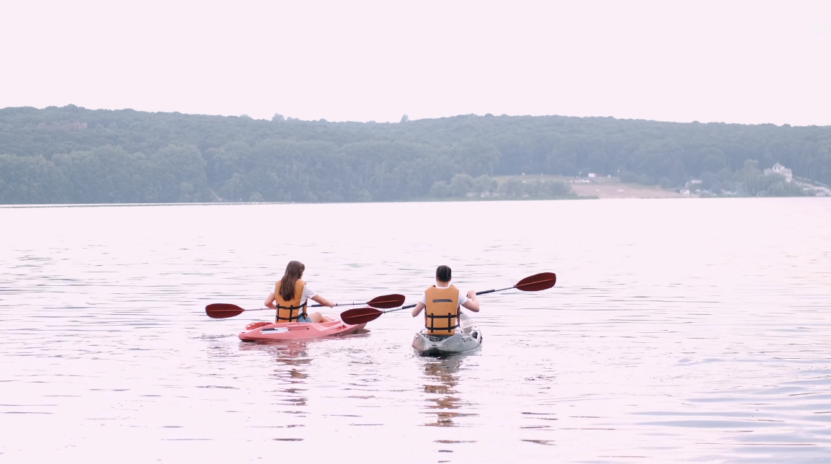A kayak is a small, narrow watercraft that is typically propelled by a single person using a double-bladed paddle. The average speed of a kayak depends on a number of factors, including the kayaker’s physical ability and strength, the type and condition of the kayak, and the water conditions.
In general, the average speed of a kayak is between 3 and 5 miles per hour. This is a rough estimate, as the actual speed will vary depending on the factors mentioned above. For example, a skilled kayaker in good physical condition using a high-quality kayak on calm waters may be able to achieve speeds of up to 6 or 7 miles per hour. On the other hand, a beginner kayaker in a poorly-maintained kayak on choppy waters may only be able to maintain a speed of 2 or 3 miles per hour.
The Strength and Ability of the Paddler

The kayaker’s physical ability and strength can play a significant role in the speed of a kayak. A kayaker who is in good physical condition and has strong upper body muscles will be able to generate more power and achieve higher speeds. On the other hand, a kayaker who is not in good physical condition or who has weak upper body muscles may struggle to generate enough power and may not be able to achieve high speeds.
Propelling a kayak effectively and efficiently involves using proper technique and body mechanics. The most common way to propel a kayak is by using a double-bladed paddle. This paddle has one blade on each end, and the kayaker uses alternating strokes on each side of the kayak to move forward.
To paddle effectively, the kayaker should start by sitting upright in the kayak with their hips against the backrest and their feet firmly planted on the foot pegs. They should grip the paddle with both hands, keeping their arms straight and their hands close together on the paddle shaft.
When paddling on the right side of the kayak, the kayaker should reach forward with the right hand and dip the right blade of the paddle into the water. They should then use a pulling motion to draw the paddle towards their hip, using their core muscles to provide power. As they pull the paddle towards their hip, they should rotate their upper body to the right, using their shoulders and torso to help generate power.
On the left side of the kayak, the kayaker should use the same technique, but with the left hand and blade of the paddle. They should reach forward with the left hand and dip the left blade into the water, and then use a pulling motion to draw the paddle towards their hip. As they do this, they should rotate their upper body to the left, using their shoulders and torso to help generate power.
By alternating strokes on each side of the kayak, the kayaker can propel the kayak forward in a straight line. It’s important to keep a steady rhythm and to use proper technique to maximize efficiency and avoid straining the shoulders and back. With practice, a kayaker can develop their paddling skills and increase their speed and endurance.
Kayak Type

The type and condition of the kayak also play a role in its speed. Touring kayaks, which are designed for long-distance paddling, are generally longer and narrower than other types of kayaks, and as a result, they are able to achieve higher speeds. On the other hand, recreational kayaks, which are designed for leisurely paddling on calm waters, are typically wider and more stable, but not as fast. Additionally, a kayak that is in good condition, with no damage or leaks, will be able to move more efficiently and achieve higher speeds than a kayak that is damaged or not properly maintained.
There are many different types of kayaks, each designed for specific activities and water conditions. Using the right one in its specific environment and scenarios can give more speed and an easier paddling time. Some of the most common types of kayaks include the following:
- Touring kayaks are designed for long-distance paddling and are typically longer and narrower than other types of kayaks. They are often used for ocean or sea kayaking and are capable of achieving higher speeds than other types of kayaks.
- Recreational kayaks are made for leisurely paddling on calm waters and are typically wider and more stable than touring kayaks. They are often used for activities such as fishing or birdwatching and are not as fast as touring kayaks.
- Sea kayaks are for ocean or sea use and are typically longer and narrower than recreational kayaks. They are often used for long-distance paddling and are capable of handling choppy or rough waters.
- Inflatable kayaks utilize inflatable materials like PVC or nylon and are typically lighter and more portable than other types of kayaks. They are often used for recreational paddling on calm waters and can be easily deflated and packed away when not in use.
- Whitewater kayaks: These kayaks are designed for use in rapids and other fast-moving waters. They are typically shorter and more maneuverable than other types of kayaks and are often used for activities such as river running or playboating.
Water and Wind Conditions
In addition to the kayaker and the kayak, the water and wind conditions also play a role in the average speed of a kayak. On calm waters, a kayak will be able to move more efficiently and achieve higher speeds. On choppy or rough waters, however, the kayak will face more resistance and the speed will be slower. Wind also plays a role, as a headwind will slow the kayak down while a tailwind will help it go faster. Rain will obviously hamper visibility and make the water tougher to navigate.
Conclusion and Takeaways
Overall, the average speed of a kayak is between 3 and 5 miles per hour, but it can vary depending on the kayaker, the kayak, and the water conditions. The longer and narrower the craft, the faster it should go as it moves through the water more easily. A skilled kayaker using a high-quality kayak on calm waters may be able to achieve speeds of up to 6 or 7 miles per hour, while a beginner kayaker in a poorly-maintained kayak on choppy waters may only be able to maintain a speed of 2 or 3 miles per hour.

